Google Ads has been one of the world’s most popular PPC advertising services. So, it does not surprise anyone that more and more people are becoming interested in what it is all about and how they can optimize their business with this platform.
But, as with all things, some issues arrive at the scene. For starters, what is the Google Ads cost? How to set up a Google Ads Campaign? And what exactly is the average ROI (Return on Investment) with this service? Of course, we cannot answer all the questions concerning Google Ads in one article.
For this particular piece, we will focus on Google Ads ROI, where to look for it in your Google Ads account, how you can optimize your ad campaign for that purpose, and the Google Ads costs associated with PPC campaigns.
If you want to know more about Google Ads pricing – let’s get into the details and read on!
What Is ROI?
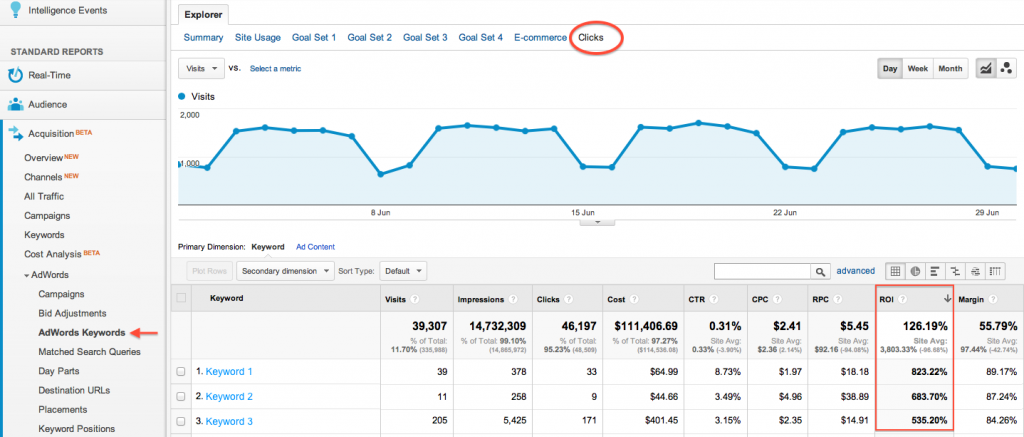
ROI means “Return on investment”. It’s a metric to assess if an investment brings profits properly. It’s usually a percentage of profitability. It indicates how much profit is generated by this particular product or service. In the case of Google shopping ads, it shows you how much money your investment brought to your company.
It’s one of the most critical indicators of success, so you will need to pay close attention to what it represents. It is also proof for the stakeholders of the success of your campaign and that the money was spent efficiently.
Here’s how to calculate ROI, which is represented in a percentage:
- ROI=Net Profit/Cost of Investment × 100
- Net Profit – how much money you have gained from the investment after deducting all the costs.
- Cost of Investment – is the total amount of money you must incur to make the investment in the first place.
If you put 100 dollars into a marketing campaign, it’s the cost of your investment. Then, if the advertisement would bring you 200 dollars, your net profit would be 100 dollars. It’s 200 of revenue minus 100 of costs. It would mean that the ad budget of 100 dollars brought you 100 dollars in net profit.
So, you gained a dollar in return for every dollar invested in advertising. Of course, not every number would be that high or low, depending on the strategy you have implemented. The ROI number will show you what your Google Ads return is.
Of course, this metric is used widely in business; it’s not only a marketing tool. Whether you are investing in the stock market, building your own business, or creating a new and improved online marketing strategy – ROI is a valuable term that you can use in many circumstances.
The Difference Between ROAS and ROI

But – it’s not the only one! Of course, to calculate the advertising spend returns, you will need to look for some return on investment metrics, but it can often be paired with ROAS – Return on Ad Spend.
Both of those are widely used in the financial world but also in ad networks. If you want to reach relevant groups of internet users, you will have to clearly understand what you are paying for, what are some of the high-performing ads on your platform, and which ones are not the best and should be optimized.
The most crucial difference between ROAS and ROI is that ROAS is more focused on marketing efforts, and ROI calculations are used more broadly for many different types of investments. Most business owners use those metrics to assess business profitability. Online or offline. Here are some of the most important differences between those two.
ROAS (Return on Ad Spend)
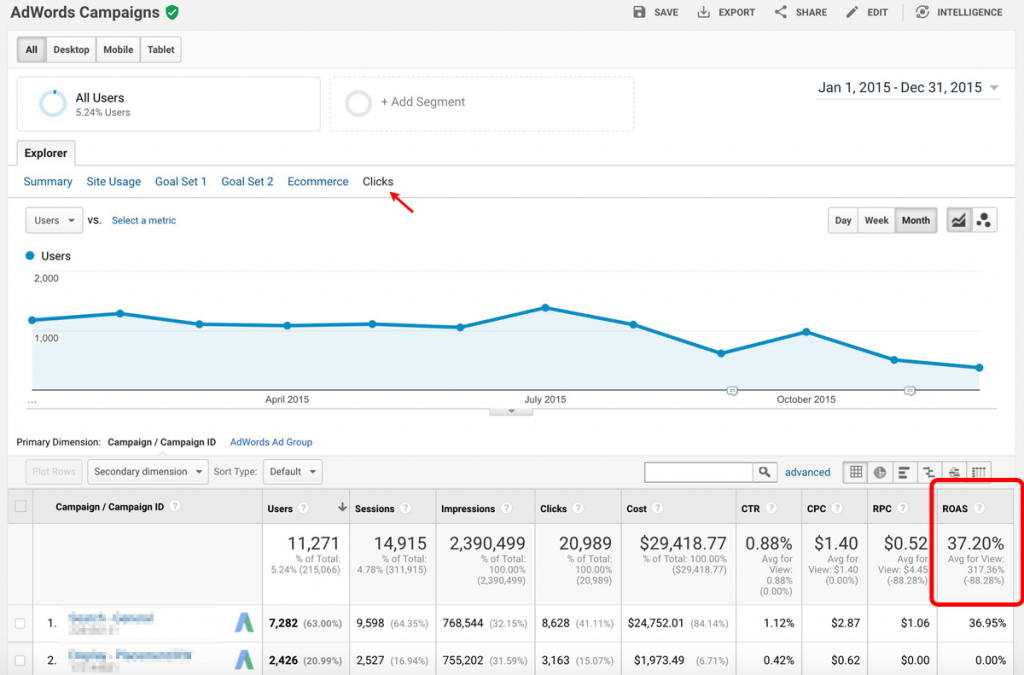
ROAS is a metric that typically focuses on ad spending. If you want to determine how much revenue you can gain from ads – ROAS is the best indicator. It calculates the number of visitors and conversions of different types and shows how many of them purchased, if the marketing efforts were helpful, and how you can optimize to get the best results.
It is usually used for digital marketing, but it can also be helpful for physical products. Companies use this metric to see if their marketing efforts generate revenue for each dollar spent. ROAS is usually presented in a percentage scale or ratio. If it’s greater than 1 or 100%, your ad efforts bring more revenue than you spend on advertising.
ROI (Return on Investment)
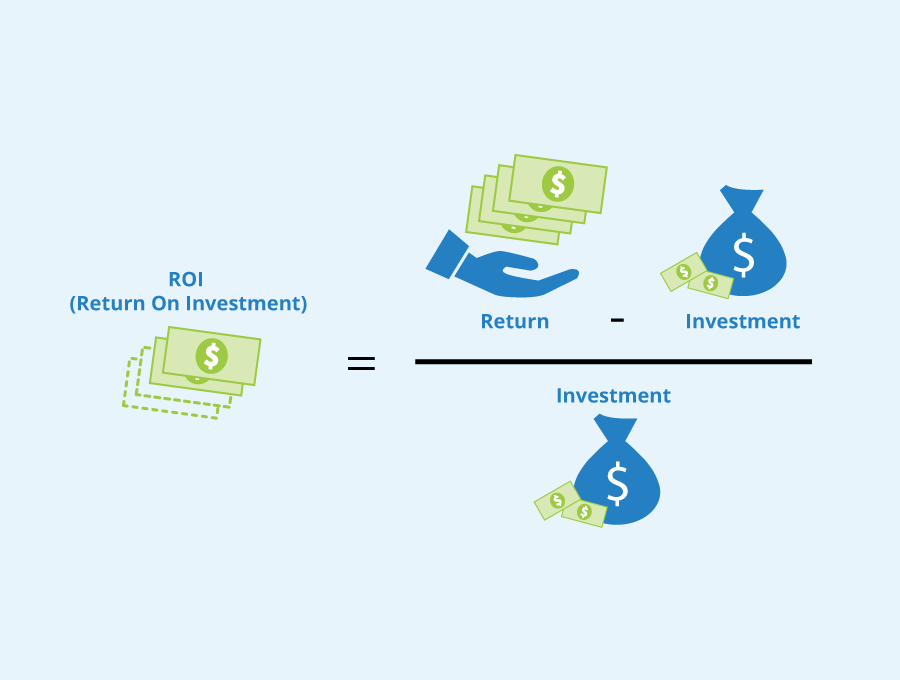
As we have explained, ROI is a much greater metric for ad campaigns. It shows the profitability of the whole business, not only when it comes to the revenue aspect. It’s vital to explore if you want to create a successful enterprise and not waste money. When it comes to the digital world, it’s great to see how the expenses and profits are working against each other and optimize your marketing efforts to bring the ROI up. Of course, there are many other factors to remember, but it’s one of the essential ones in most businesses.
ROI in Google Ads Benefits
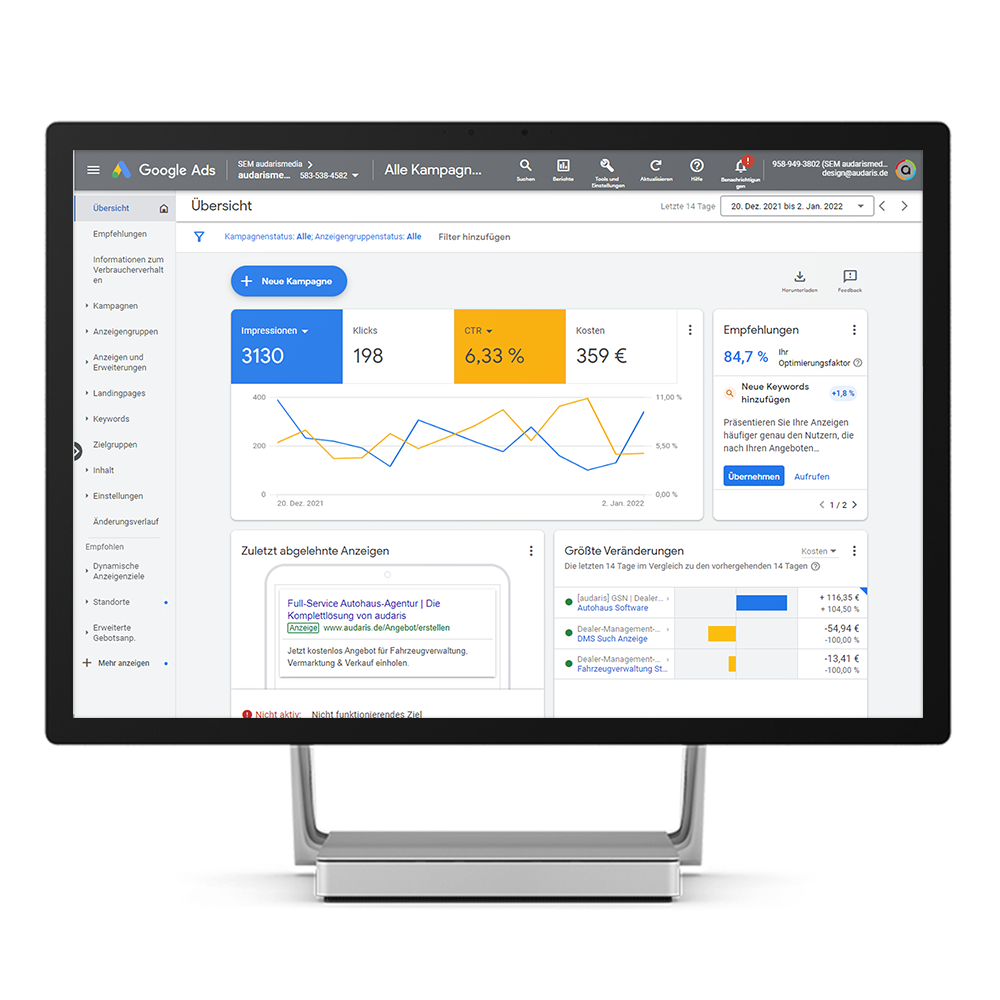
Nevertheless, the main point of this article is ROI investment in Google Ads. How to calculate the ROI, what the benefits for the investors and customers are, and how you can become a more profitable business are just some of the questions we will answer.
Of course, that’s not all ROI does, as there are many ways to utilize this formula for multiple other applications. In this part of our article, we will review the critical elements regarding ROI benefits, what you can use it for, and why it is so prevalent in the business world. Let’s dive in!
Google Ads Performance
First and foremost – Google Ads Performance. It’s the critical aspect of ROI, as it allows you to see the impact of your advertising, how many clients, leads, and conversions you are gaining – depending on the goal of your campaign. It gives you a clear picture of what is going on with your ads, where you are making mistakes, and where you should focus your efforts. It’s essential for Google Ads, as those are some of the most adaptable ways of advertising on the market, and with some pretty minor changes, you can turn everything upside down.
Budgeting
Next, when it comes to budgeting, it’s essential to calculate ROAS and ROI. It will show you not only where you should allocate your money but also – what are the priorities for your company. Maybe you are overspending in some places, and in others – you may need some cash influx to push things further. There are plenty of ways to use ROI to optimize your resource allocation to increase the factor’s percentage.
Data-Driven Decision Making
Additionally, ROI provides you with incredible data, lots of insights, and information that you can use to make data-driven decisions. As we all know, we live in the information age, so the more information you have, the better your decisions can become. So, if you want to run a successful business, use ROI to maximize what you have. Cost-per-click (CPC) can get much lower if you create a more in-depth investigation into your campaigns.
Optimization
Next, you need to consider optimization. When it comes to spotting a campaign that is not doing as well as the others, ROI is the perfect tool to do so. This can help you in optimizing your campaigns when it comes to effectiveness.
ROI factor is the key to creating more advanced campaigns that can, in return, be even more profitable for you and your company. It can also help you align your business goals with your advertising campaigns by simply putting the amount of money spent on ads against the net profit. If you are a money-oriented person – it’s a perfect tool for you to utilize for that purpose.
Testing
Next, if you want to test different ads or other factors to increase your ad rank and get higher total sales, the ROI formula can help you accomplish this task. With each experiment, ROI will go higher or lower depending on the success of your campaign. The instant effect you will see makes this particular formula so useful in money-oriented campaign efforts. Of course, it’s not an end-all-be-all solution, but it can show you the direction of where you are heading.
Long-Term Planning
Additionally, you can use the ROI formula a lot when it comes to long-term planning. When spotting patterns in marketing campaigns, there is simply no better solution. It can help you to see which campaign efforts are working and which are underperforming and assist you in understanding the potential of each campaign. Additionally, the data that comes from your ROI factor can inform future campaigns as well. You will know what works in your situation and what is problematic.
Multiple Channels View
And finally – with multiple advertising channels – you will quickly notice what works and what does not. Especially when comparing Google Ads to other platforms. You will be able to see if your efforts on a particular platform are profitable and if investing in those platforms has some legs to stand on. Of course, it does not mean that there is only one solution to everything, as many different platforms have many other long and short-term solutions, but ROI, as the merciless factor it is, will show you what happens right here and right now.
What Is a Good ROI for Google Ads?
Now, let’s answer the title question – what is a good ROI for Google Ads campaigns? As you can imagine, the answer is, like in most cases, it depends. I know it’s not the climax you were hoping for, but – it’s the harsh reality of online marketing. There are plenty of reasons why your ROi would be great at 150% and why it would be bad at 200%. Whether it would be your business goals being stomped on, the nature of your business as a whole, or the amount of money you have put into advertising – no answer would satisfy all the questions and factors.
But, there is some information we can provide you with. So, an ROI of 100% is relatively ok. For every dollar you invest, you gain one in return. But – in most cases, it’s not what people aim for. So, let’s review some of the critical factors to remember when thinking about the ROI factor.
Here’s what you should consider.
- Industry Norms
First of all, be sure that your level of return is on par with the industry standard. ROI ranges differ based on what you are selling. For example, if you put 100 dollars into a campaign and sell a car for 100,000 dollars, your ROI would be astronomical, right? But, putting in a hundred dollars and selling a hundred t-shirts for 5 dollars each is also a great result.
- Profit Margins
Additionally, you need to consider your profit margins when talking about what is “good” ROI. Narrow margins may need a much higher ROI to cover the manufacturing costs. Returning to the car example, it may be 100 dollars that brought you 100,000 in revenue, but creating a car is a pretty expensive business. On the other hand, sewing 100 shirts costs much less than that. So, be sure to include that in your calculations.
- Long-Term vs. Short-Term
Additionally, it all changes whether or not you are running a long-term or short-term business. Some campaigns are about creating a better customer experience in the long term, but some focus on what’s here and now and need constant validation of their effectiveness.
- Campaign Objectives
Next, be sure to ask yourself – what are your goals? If you want brand recognition, your ROI will not be significant. But, if you want to increase your sales or just get more revenue – then your ROI may skyrocket. It all depends on how much money you are willing to spend on ads and how focused you are on the ideas in your mind.
- Competitive Landscape
Another factor that can come into play is how competitive your business industry is. If you have many competitors in the same area, you will probably have to increase your advertising budget to fight against the fierce competition. On the other hand, if your industry is not overcrowded, you can get some pretty good prices for your efforts.
- Stage of Campaign
Next, it can depend on the stage of your campaign. Whether it’s the start of it or somewhere in the middle, it can drastically change the outcome. It’s common knowledge that some campaigns need time to become what they aim for. So, the ROI might be lower initially, but it can catch up quickly!
- Campaign Type
The next thing to remember is the type of campaign you are running. Whether it’s a search ad or a video ad – they all have differences that can influence the ROI. Of course, it will all depend on your industry. For example, running a video ad about some streetwear before a rap video may be a good idea. Doing the same thing for some heavy machinery is rather stupid.
- Historical Data
Additionally, having little to no historical data about your campaign can lead to worse outcomes as a whole. The historical aspect of PPC campaigns is the key to effectively achieving your campaign goals.
- Budget Allocation
And finally, we have the budget allocation aspect. Sometimes, the lower ROI does not mean you get less and less for your campaign.
ROI Improvement for Google Ads
So, if your ROI is low, there’s nothing you can do? Well, no! There are plenty of ways to increase your return on investment factor in your Google Ads. Of course, no magic solution works for everyone, but implementing different strategies to get better results can influence the ROI percentage. Remember not simply to fill it out and forget about it; continuously optimize your ad to make it the best.
- Keyword Optimization
The first thing you need for ROI optimization is your keywords. Many times, the irrelevant keywords are the cause of low ad returns. Be sure to find those, as well as the low-performing ones, and replace them with something that has more potential. You will see your ROI skyrocketing soon enough. Additionally, be sure to include negative keywords as well. Irrelevant clicks on those can influence your ROI and lead to unsatisfying results. This can be as simple as creating an ad for umbrellas, and people see only Rihanna’s song. Rihanna, as a keyword, not a person, may be a problem.
- Ad Copy
The next thing you need to check is if your ad copy is up to the industry standards. Maybe the text is not visible? Maybe it’s not “cool” enough? Whatever the problem may be – you need to find a solution. An underperforming ad can often be based on corrupted ad copy.
- Landing Page
The next thing you need to do is to create a landing page that, well, at least does not revolt the users. Let’s face it: there are dozens of terrible websites on the internet where you go in and are completely clueless about what is going on in there. So, in order to combat that, create a user-friendly landing page that will actually attract customers.
- Quality Score
Speaking on the landing page – be sure to increase your Google’s Quality Score. Things like good SEO practices, quality landing pages, and ad relevance, all of those things can influence your outcomes. To create the best experience for your customers, you need to convince Uncle Google first.
- Bid Management
Additionally, be sure to adjust your bid management accordingly. Without the right approach, you may be overpaying for your ads, and so your ROI is plummeting. If you are not the best at it, don’t overthink it; use target CPA or ROAS automated strategies. Those can get you far when it comes to the quality of your bidding.
- Better Targeting
Next, use the best targeting you can for your purposes. It would be unwise to advertise your streetwear to women over the age of 80, wouldn’t it? Getting to the right demographic is the key when it comes to quality advertising. Additionally, be sure to implement remarketing tactics for those audiences who have already interacted with your website and some geotargeting to attract people near your shop/service point.
- Time and Date
And finally – maybe it’s just the wrong time and date. Adjust it so that your ads will be shown to people who are actually browsing the internet looking for your stuff. If you are running a restaurant, lunchtime may be a perfect opportunity to optimize your efforts!
What Is a Good ROI for Google Ads – Conclusion
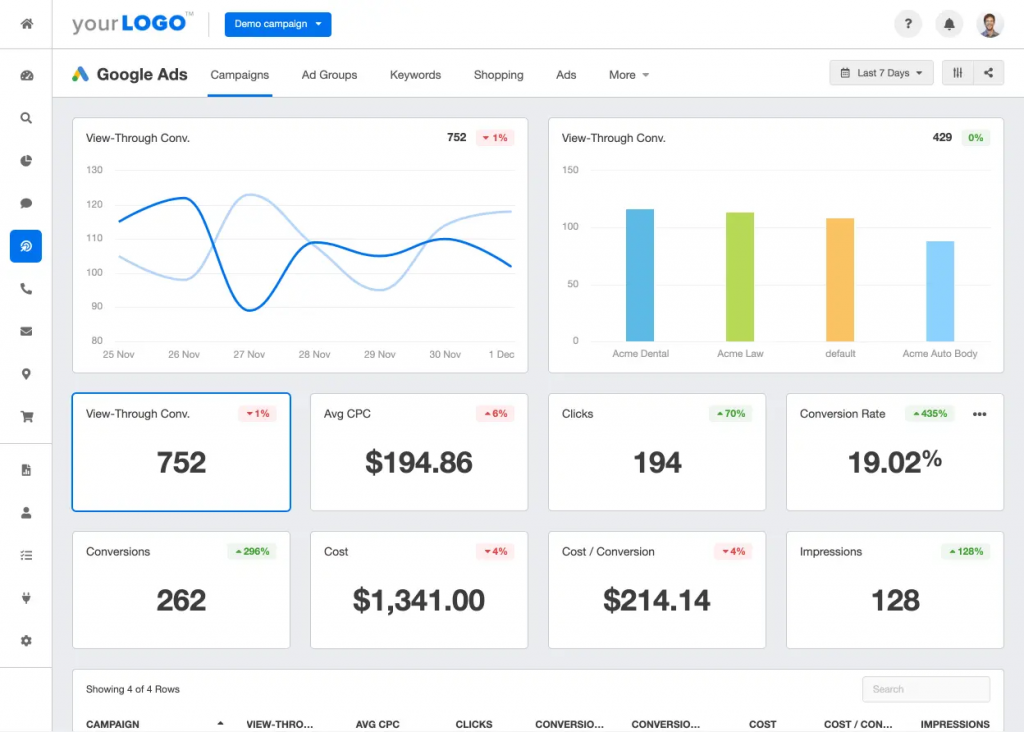
And here we are, at the end of the road! As we have shown you time and time again, getting good ROI can be an issue for many advertisers. There is no “good” ROI for everyone, but if you know your industry, you will be able to quickly understand what is good for your business in particular and what seems to not be working out.
Setting up a PPC campaign can be a hard task, but it’s a good effort nonetheless. As digital marketing is growing and growing, sooner or later, everything will be mostly on the Internet. With the digital generation, you can be sure that they will not be looking for some clothes to buy on their local news station. If the times are changing, change with the times! Try new outcomes, see new possibilities – who knows, maybe you will quickly become the PPC master you were always meant to be!
Thanks for stopping by! If you liked this article, be sure to check out other ones on our site. We have a lot of those, so we are sure that you will find something to suit your needs.

A PPC specialist who started with organic social media. For several years, the core of his activities are:- Google Ads, Microsoft Ads, Meta Ads, TikTok Ads, Twitter Ads, Linkedin Ads. He has led campaigns with a global reach, e.g. for FootballTeam, G2A, ETOTO, as well as many smaller campaigns in the sports, construction and financial industries. Has full focus on ROAS. Privately, a fan of football, history of wars and Star Wars.

